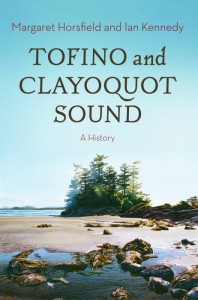 Tofino and Clayoquot Sound: A History
Tofino and Clayoquot Sound: A History
By Margaret Horsfield and Ian Kennedy
(Harbour Publishing)
For those who prefer not to spend their free time plundering academic history texts, Tofino and Clayoquot Sound: A History provides an intimate and conversational delivery of the interweaving events that shaped Tofino, Clayoquot Sound, and the surrounding territory.
Utilizing an array of sources ranging from Times Colonist archives to First Nations oral history and firsthand accounts, the novel embraces a past outside Euro-centric Western written history to provide a conclusive and concise account of events that cumulatively shaped the Tofino that we know today.
Though many relatively unknown or multi-name locations are mentioned throughout the text, Horsfield and Kennedy provide a series of well-rendered maps to assist readers in understanding their relation to each other in two dimensions.
For those who have an irrational distaste for cartography, simple in-text clarifications come complimentary, mentioning local and traditional names and using the migration of First Nations and development of roads to establish a multi-dimensional understanding of these locations and where they lie in accordance to each other.
The book takes its history seriously, not choosing any singular point in human history at which to begin but instead outlining the formation of Vancouver Island and its geological past. Geographic calamity and the collision of tectonic plates provide a surprisingly dramatic entrance into this small-town history novel.
Each chapter analyzes a different perspective in history. It details the multiple bands of First Nations in the area and how each of their unique fishing and hunting methods were affected by the arrival of the Japanese, how the Japanese revolutionized the colonial fishing industry on the West Coast, and how colonialists shaped the coast by means of the otter pelt trade.
Concluding in a portrait of Tofino at present, Tofino and Clayoquot Sound: A History wraps up seamlessly and leaves the reader feeling enlightened, rather than overburdened, by its approximately 600 pages of historical exposition. Though the knowledge is particular and hardly practical, this novel is definitely the avenue by which to begin pursuing a casual historical education.
